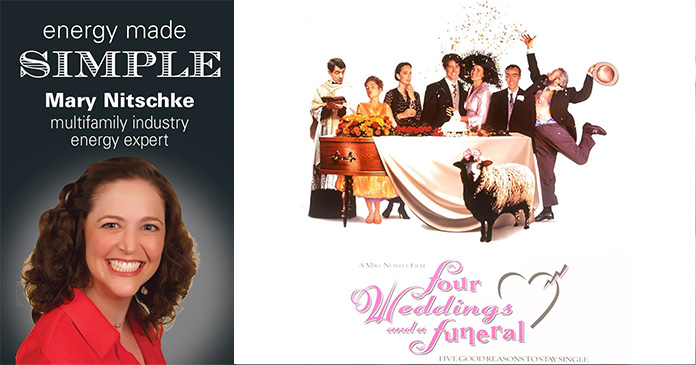We “catch” energy through our interactions with people—something called “relational energy”—and it affects our performance at work. This is what my colleagues Bradley Owens, Dana Sumpter, Kim Cameron, and I learned in an article we published earlier this year. We were motivated to do this research because energy is a vital personal and organizational resource, but research on the sources of energy have neglected a source that everyone experiences in everyday life—our relationships with others.
In a series of four empirical studies, we sought to establish relational energy as a valid scientific construct and evaluate its impact on employee engagement and job performance.
To understand how this works, think of people in your workplace who buoy you up, who lift your spirits. What do they do? What do they say? Some people are energizing because they give off positive vibes. As an employee in a large company told us about his boss, “She energized me because she loved her job and was in general a very happy person. She always came in with a smile on her face which created a positive atmosphere.” Others energize us because they create genuine connections. In conversations, for example, they devote their full attention and listen carefully.
Starts at the top
If you have an energizing boss, chances are you feel engaged at work. Focusing on relational energy between leaders and members of a large health care organization, we found that the experience of relational energy with a leader increases one’s motivation at work, attention to tasks, and absorption in work activities. This translates into higher work performance. Members of this health care company who experienced relational energy with their leaders were more engaged at work, which then led to higher productivity.
Interactions are energizing in several ways, as Rob Cross, Andrew Parker, and I learned in a series of studies of energy in organizations. They include instances when we create a positive vision, when we contribute meaningfully to a conversation, when people are fully present and attentive, and when we have an interaction that gives us a sense of progress and hope.
You are a source of relational energy as well as a recipient. When you generate relational energy in the workplace, your performance goes up. Rob Cross and I discovered this in research we did on energy mapping, using organizational network analysis to reveal the network of energy in the workplace. The more people you energize, the higher your work performance. This occurs because people want to be around you. You attract talent, and people are more likely to devote their discretionary time to your projects. They’ll offer new ideas, information, and opportunities to you first.
The opposite is also true. If you de-energize others, people won’t go out of their way to work with you or to help you. In the worst case, they might even sabotage you at work.
How can you increase relational energy in your workplace? Here are four actions you can take personally and as a leader.
Build high-quality connections
By definition, high-quality connections generate relational energy. Jane Dutton and Emily Heaphy suggest several ways you can grow and improve high-quality connections, such as taking on a challenge at work with a group of like-minded people. In one case, two operational leaders at Kelly Services, a workforce solutions firm, created a Business Resource Group to promote leadership development and increase employee engagement. As Dutton and Heaphy describe, the leaders focused on building high-quality connections and strengthening social capital as ways to improve the leadership pipeline.
Create energizing events
Organize and run events with an explicit focus creating energy, not just delivering content, products, or services. Consider how Zingerman’s, a renowned community of food-related businesses in Ann Arbor, Mich., infuses energy in their seminars and events. I often bring groups of executives to their restaurant, the Roadhouse. After dinner, CEO and Co-Founder Ari Weinzweig or one his managing partners will present on a particular topic, such as visioning, open book management, or the natural laws of business. The content and delivery are fantastic and energizing themselves. But energy goes up another level when a panel of frontline staff come into the room and field questions. They can answer any question, but what matters even more is the energy they exude. They are positive, enthusiastic, and clearly love their work and the organization. The executives leave the event abuzz with energy because it’s so contagious.
Promote a “giver” culture
The act of helping someone at work creates energy in the form of positive emotions—the “warm glow” of helping. Receiving help creates energy in the form of gratitude. Gratitude for help received encourages paying it forward and helping others, as Nat Bulkley and I documented in a large-scale study. The Reciprocity Ring, a group-level exercise involving giving and getting help that my spouse Cheryl Baker, CEO of Humax, created, elevates giver behaviors—and energy. In a pilot study Adam Grant and I conducted, we found that participation in the Reciprocity Ring increases positive emotions and decreases negative emotions.
Map relational energy
Organizational network surveys map the invisible network behind the organizational chart—the real way people interact. Some years ago, Rob Cross and I started adding an energy question to the usual set of network questions we asked in our organizational research and consulting. Presenting each respondent with a list of names of others in the organization, we asked, “When you interact with each person, how does it affect your energy?” Responses could range from “very energizing” to “neutral” to “very de-energizing”. The resulting data enabled us to draw relational energy maps of an organization. The results are quite revealing. In a large petro-chemical company, for example, we found a lot of de-energizing relationships—and most of them emanated from the leaders. With this objective map, they could identify where they needed to make positive improvements. Energy maps help you target where to focus on building high-quality connections, creating energizing events, and using tools that create an energizing giver culture.
So if you feel like you have an energy crisis in your organization, the good news is that you can do something about it by focusing on relational energy—the energy we get and give in our daily interactions. Every action and word, no matter how small, matters in boosting productivity and performance.
Author: Wayne Baker
















